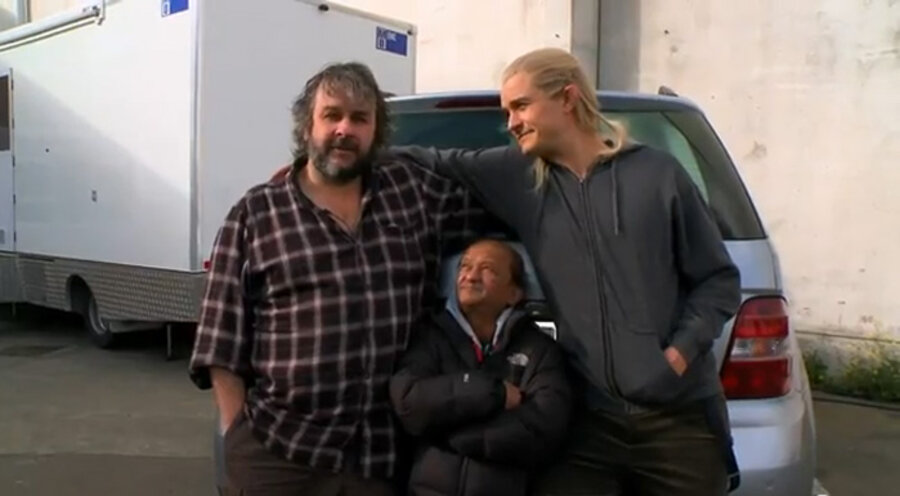'The Hobbit': a glimpse of the studios
Loading...
The seventh in the "behind-the-scenes of 'The Hobbit'” video series arrived today, with the production team taking viewers into the studios where the two movies are being filmed.
There are a couple of glimpse of the movies themselves, including a look at actors on the set just before they begin filming a scene in the troll’s cave (the camera tantalizingly cuts away just before shooting begins), as well as footage of the ensemble filming the sequence in which hobbit Bilbo Baggins and his dwarf companions escape elf stronghold Mirkwood by floating down a river in barrels, and a brief sighting of a dwarf walking through a forest that is on fire.
The video begins again with director Peter Jackson, this time driving into the Stone Street Studios, which is otherwise closed to the public during filming. (The area was also a production site for the “Lord of the Rings” trilogy and Jackson’s version of “King Kong.”)
“It kind of feels a bit like I’m driving the tram through Universal Studios,” Jackson says later as he points out the various buildings to the camera.
Actor Luke Evans, who plays a character named Bard the Bowman in "The Hobbit," takes viewers on a tour of trailers on the set, which are labeled with character names like Bilbo and Dwalin. Evans brings the camera crew to the trailer of – among others – actor Aidan Turner, who plays dwarf Kili, and actor Peter Hambleton. Hambleton, who plays dwarf Gloin, offers viewers before and after scenes of his two-hour prosthetics transformation.
A stunt crew with lime green swords are seen battling it out outside the studio, some partially in costume.
Swordmaster Steven McMichael starts talking to the camera crew and is promptly mock-speared in the neck with one of the plastic swords.
“I just died,” he informs the camera, then continues. “This is the intensity we like to bring on set every day.”
A tour of the costume department reveals the creepily named “flesh factory,” where fat suits are constructed for the actors playing the dwarves, and artists John Howe and Alan Lee, who originally drew the covers for the "Lord of the Rings" series and now work on the films, greet the camera. Then the camera crew is taken on a tour through the model-making area, where small versions of many sets are created. (One model is blurred out with a red prohibited sign over it reading “Film 2.”)
Second assistant director Bruno Du Bois brings the camera crew onto the set before the troll cave scene, just in time to see actors Richard Armitage, who plays dwarf leader Thorin, and actor Ian McKellen, who portrays wizard Gandalf, cross in front of the camera. Piles of gold objects and craggy rocks can be seen making up the set.
“Now we’re just going to, ssshh, walk away,” Du Bois tells the camera as filming is about to begin, and the camera swings outside, followed by a sequence of actor Martin Freeman, who plays hero hobbit Bilbo Baggins, being spun in a barrel on wheels.
Members of the crew playing a very competitive ball game that resembles foursquare can also be seen. “Do not give in, do not make eye contact,” one of the players tells the camera about the game.
The camera crew is also given a tour of Weta Workshop, where creative director Richard Taylor lists the tasks accomplished there, including “molding, spraying, trimming, sanding."
For those wishing for more celebrity sightings, the video ends with a happy surprise. Actor Orlando Bloom, who played Legolas in the "Lord of the Rings" trilogy and is reprising his role in "The Hobbit" series, is found with Jackson. Jackson asks, “What are you doing?” Another camera then shows Bloom, holding the original camera and filming Jackson.
“I’m filming the blog,” Bloom tells his director.
“Shouldn’t you be killing Orcs or something?” counters Jackson.
Check out the full video below:





